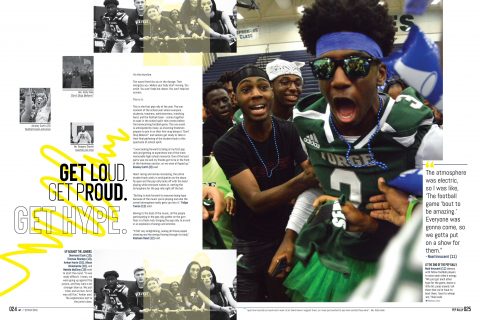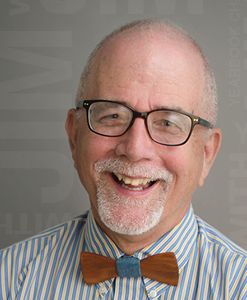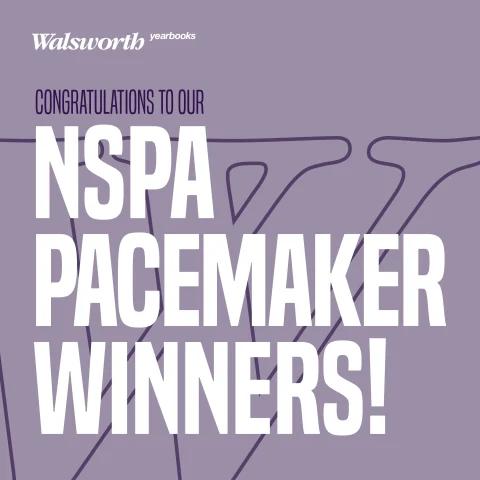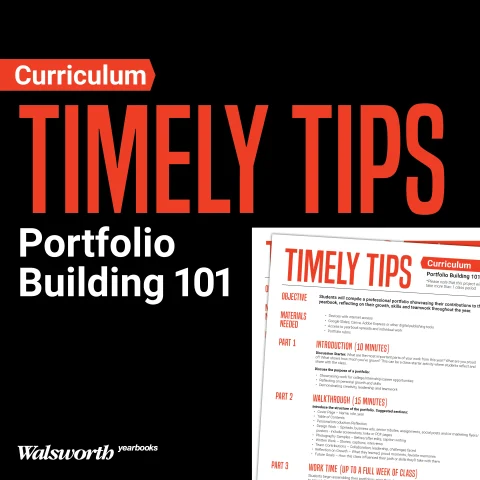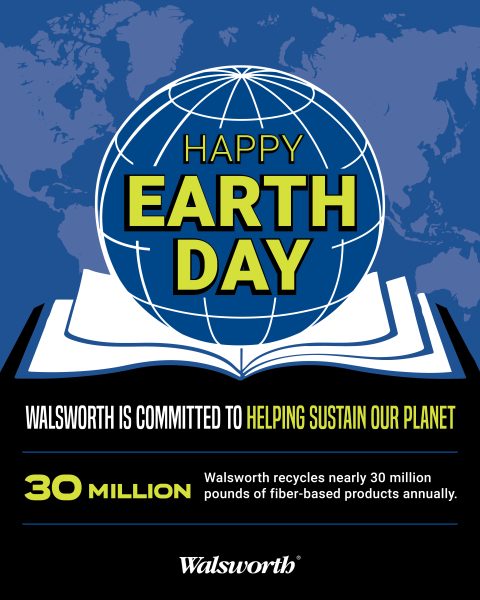Tiffany Kopcak was recently named JEA’s H.L. Hall Yearbook Adviser of the Year Special Recognition Adviser. Her staff’s 2020 yearbook was one of host Jim Jordan’s favorite volumes, and they’re known for their willingness to go in new directions for coverage and design. She is our February 2021 Adviser of Note. To learn even more about Kopcak, listen in to the latest episode of Yearbook Chat with Jim to hear about her love of her home state Virginia (it’s not what it looks like in movies) and how her yearbook staff has been working through the challenges posed by the past two school years.
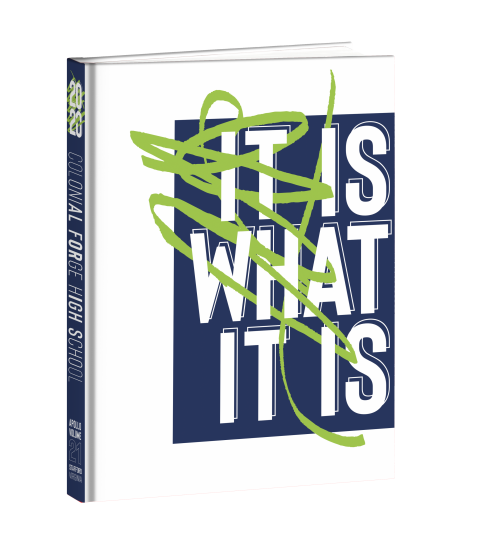 Profile
Profile
Tiffany Kopcak, Colonial Forge High School, Stafford, Virginia
High school attended: Culpeper County High School, Culpepper, Virginia
College attended: University of Mary Washington, Fredericksburg, Virgina
Did you participate in journalism in high school? One semester photography class
Did you participate in journalism in college? One semester journalism class
Were you ever a professional photographer? I shot a former editor’s wedding, and that’s it.
What were you doing before you became a teacher and a yearbook adviser? Temp jobs, though in college I did work as a state park guide, giving tours and teaching about wildlife and ecology at Caledon Natural Area.
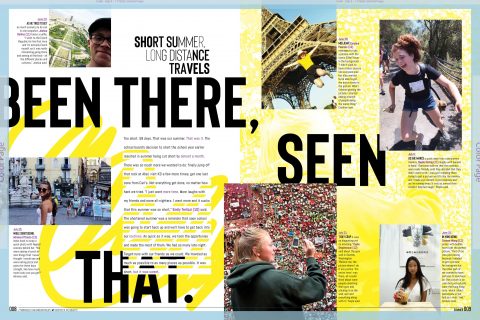 Size of your book: 9
Size of your book: 9
Number of pages in your book in 2020: 320
Projected number of pages in your book in 2021: 244?
Online or InDesign? InDesign
Delivery: This year, it’s a summer delivery
Student Population: 2000
Number of books sold in 2020: 825
Awards for the 2019 and 2020 book: 2019 Pacemaker finalist, 2019 Silver Crown
Number of books you have advised at Colonial Forge including the 2021? 13
Other schools you have taught and/or advised at: King George High School, King George, Virginia
Other classes you teach at Colonial Forge: English 11 – American Literature
Q&A
How and why did you decide to go into teaching? advising?
I always wanted to be a teacher, ever since I was a little kid, but as I got older I wanted something with more adventure and excitement. So, I went to college to study environmental journalism, but did not find work and ended up bored senseless in office jobs. I went back to college after I graduated to get my Master’s in Education. But by that time I was married and had a mortgage and could not afford to teach for free, so I got a job as a long-term sub in a nearby high school. Then, when their yearbook adviser left, I volunteered to do the job because no one else wanted it. They gave me a provisional license, and that was that. I knew it was the thing for me; I’ve always loved photography and have a compulsive need to make things look right.
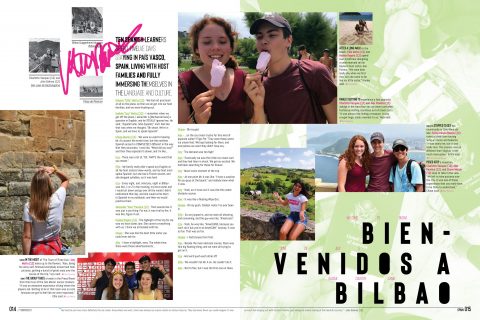
What was the most difficult part of your first year advising?
My first year of advising I met my one editor-in-chief and a photo editor at a hotel in Williamsburg, Virginia, for a summer conference, during which they plotted to get me fired. We are still good friends to this day and still laugh about it. One editor is now a yearbook adviser herself.
There were significant and growing pains; that staff had seen three different advisers in four years and did not adjust well. My biggest challenge was learning the software, and the format of yearbook journalism, and the expectations, and the constant surprise of how many extra jobs there are when you say you’re going to be the yearbook adviser. You are running a business; you are scheduling picture day; you’re coordinating with people that you just met, you’re making decisions and producing a book that people all have opinions about. Your students don’t just produce work for their grades and their learning, but for the entire community to examine.
What made you want to come back for year two?
There was never a moment that I was not going to come back from year two. Yearbook fulfilled all my creative needs. I love teaching; I loved working with the kids and the connections we develop. It is so much fun to work with teens in a way that is as much listening as telling, if not more so.
I think most importantly there was so much to learn, and I love to learn. I love to figure out new things. I love to find out new stories. I love to discover. I love to be challenged, and yearbook definitely challenges you and definitely gives you an opportunity to find out more about the world around you than just being a teacher in the classroom.
What advice would you give to a first-year adviser?
Join the Journalism Education Association, go to all the conferences you can, and get involved with the resources in your state. There are so many remarkable advisers out there that are inspiring and supportive, and they all want everyone else to be successful and want to help in any way they can, and are working hard to create this support network for a challenging, challenging industry that very few people really fully understand.
What were some of the factors that have led your success as an adviser?
In the fourth grade, my gifted teacher was a problem-solving teacher; she loved to give us little problems to solve. When I had her again as my college professor for my M.Ed., she broke down the skills of creatively solving problems. Now, whenever anything comes up – whether it’s solving a teaching problem, or a how-to-tell-a-story problem, or troubleshooting an approach to a design, or figuring out how to punctuate the brain droppings of a 15-year-old artist, I can solve it. That’s one of my strengths. And it is something that I work to teach my kids.
Another factor is that I’m very easily bored, like I am very easily bored. For my own sake, I demand that my kids do different stuff all the time, especially in their storytelling, and I think they like that and that pushes them to be more creative.
Finally, my program doesn’t have an application; it’s open enrollment and we accept everyone and try to build a home for everybody. That gives us a wide variety of student backgrounds to pull from, a wide variety of cliques to cover, and did this amazing feeling of a home in the room that people want to stay and work in.
What has been your biggest challenge as an adviser?
I have really been struggling with burnout. And I think that’s more of my role as a teacher necessarily than as a yearbook adviser, but to teach passionately you teach with your heart, and your charisma, and your personality, and your creativity, and those resources can be difficult to refill, so trying to take care of myself with the demands of running a publication and therefore a business and trying to train fourteen-year-olds how to work at a professional level takes a lot out of you. I struggle with refilling my tank, metaphorically speaking. Though I also hate stopping for gas when I’m driving.
Finishing the book under Coronavirus quarantine in the spring of 2020
What was your biggest challenge in completing your 2020 book?
Honestly the biggest challenge was just getting a couple of last-minute pictures. The editorial board was absolutely phenomenal and had communication and teamwork down to a science. We had discussed the problem in advance; we knew there was a chance that there might be closures or there might be some sort of delays, so we worked the three or four days before our spring break (March 13-20) to gather as much content as possible.
When I found out we were not going back, I went into the school and grabbed desktop computers, and delivered them to the students so they could finish working. Between desktop computers, and thumb drives, and laptops, and Zoom calls, and a billion texts, they got it done.
It was tiring to sit at a desk all day without them in the room with me. My heart was a little bit sad, but it was an impressive feat, and I am so proud of them and the work that they put into getting the book done on time so that it would be one of the few things that those students had at the end of the year that was still real and traditional.
What positives came out of the process of finishing the book? The 2020 staff was featured in the local paper for continuing to work in the pandemic.
The 2021 book
What has your 20-21 school schedule been? Did you start online or in person or a hybrid? Have there been any changes?
We have been virtual for the first semester and my yearbook class did not start until the second semester began on Feb. 2. We anticipate being concurrent hybrid in the spring – with kids attending classes virtually and in-person at the same time, but many students who signed up for that a couple of months ago now intend to learn from home. Many students have decided not to take advanced journalism, knowing that events and interviewing, and activities, and production – basically everything – won’t be the same.
A core group of leaders have been attending workshops and working over the summer and into the fall trying to stay afloat. They’re trying to collect the stories and do the interviews and talk to people, but it’s been it’s been a challenge. We don’t have a ladder at all. Basically, when stories come up we just add them to the list and figure out how much space they need. Are they a mod in the portrait pages, or jump coverage, or most of a spread, or all of a spread, or does it go with a spread? Then, they just start to kind of plug away at them.
We don’t know how long the book is going to be yet; we’ll make a decision the first week in April as our first big deadline approaches. We’ve been lucky to be able to get a lot of senior portraits done, but most underclassmen have not and this is a great big year of “we shall see.”
How did you and your staff prepare to start the year?
The editorial board attended the Gloria Shields workshop and they attended an Elite weekend, so they have approached the theme, and figured out their specialties, and have brainstormed. We meet once a week, and it’s honestly not enough, but we are exhausted from being on the computer all day so it’s all we have. It’s a global pandemic, so whatever we do, whatever they do, has to be enough.
At this point
How has Covid-19 directly affected you and your staff?
My students have not been sick but they have lost relatives.
What have been your biggest challenges and how are you solving them?
Energy, time, and design collaboration are still challenges we haven’t solved. We are using Google Stream for our file management, and finding that has made a huge difference in communication and staying on top of things. It’s been the biggest game changer of the program.
What new coverage ideas have you included in the book?
Like so many, we’re trying to go as profile and people-focused as possible. They chose the theme “Here We Are” both for the emotional statement of, “well, here we are” and the idea that no matter where someone is, they are part of this experience, part of our school, part of this pandemic.
This year there is so much to cover that is news, and then also trying to get the evergreen/trend coverage as well has been a challenge of time, more so than the challenge of storytelling. We had significant Black Lives Matter protests in our small town, including tear gas used against our students. We are in close proximity to Washington, D.C., so we had students at the rally and insurrection on Jan. 6. There’s a lot of student life still happening – we have maps of what room kids attend school from their homes, coverage about jobs, a list spread that came out of nothing. There’s lots of ideas for student life, but academics has been harder.
How are you utilizing crowd sourcing for photos and content? Has your community been helpful?
Our community has been relatively helpful. It’s the same group of kids that frequently provide information, so diversity and coverage has been a challenge. Kids don’t respond to emails asking for interviews as eagerly as they responded to a knock on their classroom door pre-COVID.
It’s been additionally challenging as the students then have to discuss showing pictures of people not following mask mandates, not doing the behaviors that people should be doing. They’re still working through the questions of is it newsworthy? is it responsible? does it impact the student in a way they haven’t thought about? With such limited meeting time, it’s tough to move forward when you’re working through big ideas.
What words of encouragement can you offer to advisers around the country at this point in the year?
Know your limits and ask for what you need. Ask your coworkers for content. Ask your administration to add on sales notes to their communication to the school body. Ask your rep for time, or artist work. Reuse templates if you have them on an archive. Focus on the people. Focus on the stories. It’s an important year to preserve, so take your time.
Don’t be afraid to cover challenging things, and seek truth and variety, not equality of opinions. You don’t need to give air time to conspiracy theories in the name of balance, but you do need to cover a variety of voices and perspectives.
Don’t let anyone tell you there aren’t any stories, because whether there is a national protest going on your backyard or whether you’re doing a story on the trends of playlist categories trending on Spotify, there’s always a story.
Tell a story that is indicative of your life as an adviser. Tell a story about a moment in your career as adviser that you will never forget.
I both love and hate yearbook distribution day. I hate it because I know I’m going to get a phone call – if not one, then five: Shaun/Sean/Shawn’s name being misspelled; somebody’s not in the portrait section even though they never got their picture taken; a senior ad was skipped; or something went wrong, and it is a catastrophe in somebody’s house. It’s going to happen.
But it’s my favorite when the cafeteria is quiet, and cafeterias aren’t usually quiet. I don’t mean silent, but I mean at every table in the cafeteria there are a yearbook or two that all the kids are looking through, and reminiscing, and smiling, and finding their crushes, and doing all those things that teens do when they get the book. I always send the yearbook kids on a lap to soak it all in. They know that they’ve done this thing that none of their friends really understood while they were doing it, but now it’s tangible, it’s real. They’ve completed this impossible task that truly is impossible. I don’t understand how so many yearbooks get produced every year; it’s a miracle.
One distribution moment stands out above all the others. When a student who was in our special education class – the ones that do not take general education classes but rather focus on life skills – picked up his copy the yearbook, he turned to the page covering his class working in the garden, and their friendship, and their parties. With this sound of awe in his voice, he turned to his friends and he said, “Look! It’s us! It’s all of us!” and I’ve just never forgotten how that made him feel, and how that made me feel.
I am a firm believer that representation matters, and that people should see themselves in the media they consume. They should see themselves in the music they listen to, in the movies they watch, in advertisements for the things they want to buy, and most importantly, in the news. The yearbook is supposed to be the story of a year and the people that make up a school. It needs to include everybody. Everyone deserves to be seen and heard. Everyone deserves to be celebrated.
Bonus!
What’s the most rewarding thing about yearbook?
We sit in a row after hours. I’m at my desk – the editorial board at their computers parallel to my own. There’s music playing. Usually, I know what it is. Sometimes, I don’t have a clue. It’s quiet. But only for a moment. Someone has a thought, or a question, or remembers something they meant to say an hour ago. It’s companionable, fleeting, and cannot be recreated.
This is the time I get with these kids.
We share the work, the passion, the focus. We’re a team. By the time the silence has set in, I’ve been able to step back. The teaching is done. Now, I’m a guide. A scaffold for them to reach their vision. I work for them.
This shared vision, this collaboration filled with heart and purpose, this quietness that sets in after the hustle and bustle of the million what-ifs, possibilities, and terrible design ideas is my sweet spot, and what makes deadline night/week/month so rewarding for all its strain.
That part is my favorite because it’s irreplaceable. I’m still friends with my first editors from 15 years ago. It’s wonderful, but different. That time, those ephemeral workdays, cannot last past deadline.
My other favorite is the opposite end of the spectrum, and I get to experience it every year: the moment after the first-year student’s first photoshoot or interview. The panic – the absolute panic – on their faces before they go on assignment cracks me up because I know what’s coming. I shoo them out the door, assuring them that the seniors will not devour them or shove them in lockers, or whatever horrors they’ve imagined. Fifteen or 20 minutes later, they return, grinning ear to ear and bouncing around, shedding pent-up energy and nerves. They’re excited. They’ve climbed the mountain and survived. They’ve accomplished a task they didn’t think they could do, and they got to be “in the know” in a way only a journalist can.

